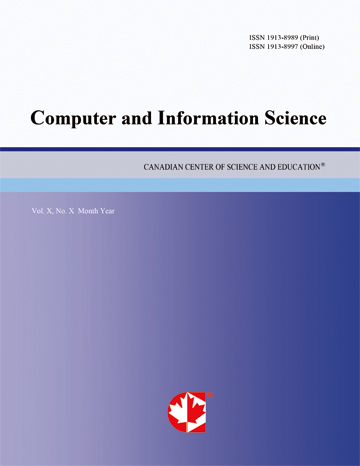Fuzzy Clustering of Students’ Data Repository for At-Risks Students Identification and Monitoring
- Udoinyang Inyang
- Enobong Joshua
Abstract
In educational data mining, identifying academic courses that contribute significantly to students’ class of degree and predicting students’ performances can help in the choice and improvement of intervention and support services for students whose performances are poor. Experience shows that graduates with weak class of degree find it difficult to gain employment, hence, the need to identify and group these at-risk students at an early stage of their academic career and then develop a plan to improve their performance. This paper identifies possible academic courses with significant contribution to academic performance and predicts students’ graduating class of degree. 11Ants Model Builder provided a means for course rank analysis while MATLAB was the system development tool. Fuzzy c-Means (FCM) algorithm was used to partition students into weak, average and good clusters. Four (4) natural clusters of at-risk students were automatically identified with k-means algorithm. Results show that Sugeno-type inference system is best suitable for the provision of initial parameters for Adaptive Neuro Fuzzy Inference System (ANFIS) training of students’ dataset. The results also prove the effectiveness of the combination of FCM, k-means and ANFIS in the classification of students based on academic performance and at-risk levels. The results will help educational managers monitor groups of students at the same level of performance, and those at the boundary of two classes of degree for the provision of informed counseling and intervention plans, to improve academic performance.
- Full Text:
 PDF
PDF
- DOI:10.5539/cis.v6n4p37
Journal Metrics
WJCI (2022): 0.636
Impact Factor 2022 (by WJCI): 0.419
h-index (January 2024): 43
i10-index (January 2024): 193
h5-index (January 2024): N/A
h5-median(January 2024): N/A
( The data was calculated based on Google Scholar Citations. Click Here to Learn More. )
Index
- BASE (Bielefeld Academic Search Engine)
- CNKI Scholar
- CrossRef
- DBLP (2008-2019)
- EuroPub Database
- Excellence in Research for Australia (ERA)
- Genamics JournalSeek
- GETIT@YALE (Yale University Library)
- Google Scholar
- Harvard Library
- Infotrieve
- Mendeley
- Open policy finder
- ResearchGate
- Scilit
- The Keepers Registry
- UCR Library
- WJCI Report
- WorldCat
Contact
- Chris LeeEditorial Assistant
- cis@ccsenet.org
